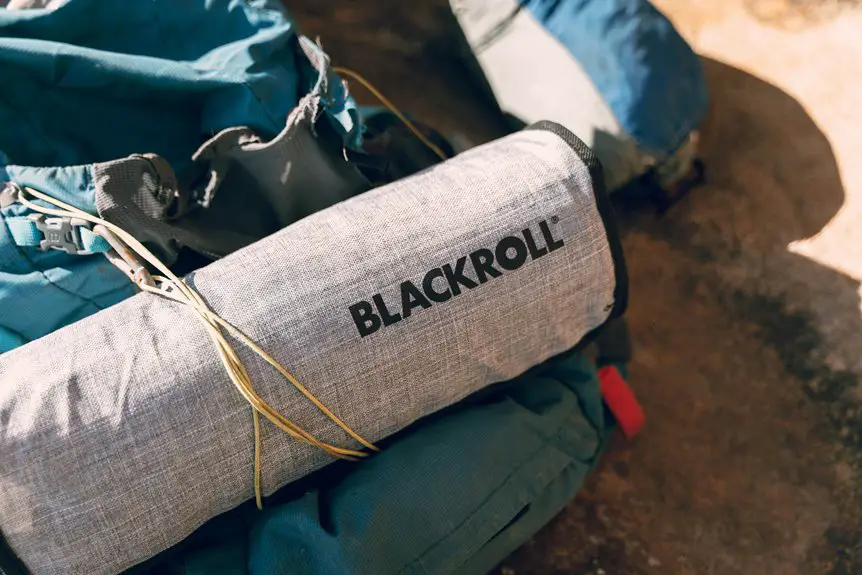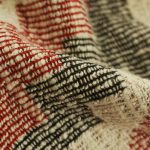When you’re packing for your next adventure, choosing the right fabric can make all the difference. Quick-drying materials like polyester, nylon, and merino wool are essential for comfort and performance. Each offers unique benefits tailored to your needs, whether you’re hiking in humid conditions or enjoying a casual evening out. What sets these fabrics apart, and how do they perform in various situations? Let’s explore the options and their advantages.
Table of Contents
Key Takeaways
- Polyester is lightweight, durable, and quick-drying, making it ideal for travel and sports activities in various climates.
- Nylon offers impressive strength and water resistance, ensuring comfort and dryness during unexpected weather conditions.
- Merino wool is naturally breathable, regulates temperature, and provides style, suitable for both casual outings and athletic pursuits.
- Quick-drying fabrics wick moisture away from the skin, enhancing comfort and performance during physical activities.
- Consider the environmental impact of fabrics, opting for sustainable options to reduce waste and pollution in the travel and sports industry.
Overview of Quick-Drying Fabrics
Quick-drying fabrics are a game changer for anyone who loves travel and sports. These materials, often made from synthetic fibers like polyester or nylon, are designed to wick moisture away from your skin and evaporate quickly.
Quick-drying fabrics revolutionize travel and sports, keeping you comfortable and dry while wicking moisture away effortlessly.
When you engage in outdoor activities or explore new destinations, you need clothing that keeps you comfortable and dry, regardless of the conditions. Quick-drying fabrics are lightweight and breathable, making them perfect for layering or packing in your luggage.
They resist wrinkles and maintain their shape, ensuring you always look sharp. Plus, they’re often treated to be odor-resistant, so you can wear them multiple times without worry.
Investing in quick-drying apparel can enhance your adventures, allowing you to focus on enjoying the moment.
Benefits of Polyester for Travel
When you’re traveling, you want clothing that dries quickly and keeps you comfortable.
Polyester’s quick-drying properties make it an excellent choice for those unexpected rain showers or sweaty workouts.
Plus, its durability guarantees you won’t break the bank replacing worn-out gear anytime soon.
Quick Drying Properties
As you commence your travel adventures, the benefits of polyester fabrics become immediately clear, particularly their quick-drying properties.
Polyester absorbs minimal moisture, which means you won’t be stuck in damp clothes after unexpected rain or a post-workout sweat. When you wash your polyester gear, it dries quickly, allowing you to pack light and wash on the go. This is especially useful when you’re hopping between destinations or need fresh clothes fast.
Plus, quick-drying polyester is lightweight, making it easy to carry and perfect for layering. Whether you’re hiking, lounging at the beach, or exploring a new city, polyester keeps you comfortable and ready for your next adventure without the hassle of wet, heavy fabrics.
Cost-Effective Durability
Durability is a key factor when considering travel gear, and polyester excels in this area. This fabric isn’t just tough; it’s also cost-effective.
You’ll find that polyester withstands wear and tear better than many other materials, making it ideal for your adventures. Whether you’re hiking rugged trails or lounging on the beach, polyester gear can handle it all without breaking the bank.
Plus, its resistance to fading and shrinking means your clothes will look great trip after trip. You won’t need to replace items frequently, which saves you money in the long run.
In short, if you want to invest in durable, budget-friendly travel essentials, polyester should be at the top of your list.
Advantages of Nylon in Outdoor Gear
Nylon has quickly become a favorite choice for outdoor gear due to its impressive strength and lightweight properties. You’ll appreciate how durable nylon is, resisting wear and tear from rugged activities.
Its water-resistant nature helps keep you dry in unexpected weather, making it ideal for hiking or camping. Plus, nylon dries quickly, so you won’t have to worry about staying soaked after a sudden rain.
Its flexibility allows for a comfortable fit, whether you’re climbing, biking, or just enjoying a leisurely walk. Also, nylon blends well with other materials, enhancing breathability and overall performance.
With its ability to withstand harsh conditions, nylon gear guarantees you stay prepared for any outdoor adventure, giving you the confidence to push your limits.
Merino Wool: A Natural Alternative
While you might think of wool as heavy and itchy, merino wool is a surprisingly lightweight and comfortable option for travel and sports. Its fine fibers make it soft against your skin, eliminating that scratchy feeling often associated with traditional wool.
Plus, merino wool regulates temperature well, keeping you warm when it’s cool and cool when it’s warm. This makes it ideal for varying climates on your adventures.
You’ll also appreciate its natural breathability, which helps you stay comfortable during intense activities.
Another benefit is its stylish appearance; you can wear it in casual and semi-formal settings.
Moisture-Wicking Capabilities Explained
How can moisture-wicking fabrics enhance your comfort during travel and sports? These innovative materials pull sweat away from your skin and promote quicker evaporation, keeping you dry and comfortable.
Here are three key benefits:
- Temperature Regulation: Moisture-wicking fabrics help maintain a stable body temperature, preventing overheating during intense activities.
- Reduced Chafing: By keeping your skin dry, these fabrics minimize friction and chafing, making long journeys or workouts more enjoyable.
- Quick Drying: Unlike traditional fabrics, moisture-wicking materials dry quickly, allowing you to stay fresh and comfortable throughout the day.
Incorporating moisture-wicking fabrics into your travel and sports gear can greatly enhance your overall experience, making every adventure more enjoyable.
Eco-Credentials of Quick-Drying Fabrics
When you choose quick-drying fabrics, it’s important to contemplate their eco-credentials.
You might wonder about their biodegradability, the impact of synthetic versus natural materials, and the water usage in their production.
Understanding these factors can help you make more environmentally friendly choices for your travel and sports gear.
Biodegradability of Fabrics
As you explore quick-drying fabrics for travel and sports, it’s important to assess their biodegradability and overall eco-credentials.
Not all quick-drying materials are created equal; some can contribute to environmental issues. Here are three key factors to reflect on:
- Material Composition: Look for fabrics made from organic or recycled materials, which tend to break down more naturally than synthetic alternatives.
- Chemical Treatments: Fabrics treated with harsh chemicals may resist biodegradability, so check for eco-friendly finishes that don’t compromise the environment.
- Longevity and Wear: Fabrics designed for durability can reduce waste over time, as they’re less likely to end up in landfills.
Choosing responsibly can help you enjoy your adventures while minimizing your ecological footprint.
Synthetic vs. Natural Impact
Understanding the eco-credentials of quick-drying fabrics involves comparing their synthetic and natural impacts.
Synthetic fabrics, like polyester and nylon, are often derived from petroleum, which contributes to environmental pollution and resource depletion. While they dry quickly and resist wrinkles, their production emits harmful greenhouse gases.
On the other hand, natural fabrics, such as cotton and wool, are biodegradable and have a lower carbon footprint. However, they may require more water and time to dry.
When choosing quick-drying options, consider how these materials affect the planet. While synthetic fabrics offer performance, natural alternatives provide sustainability.
Ultimately, balancing quick-drying needs with eco-conscious choices can lead to more responsible travel and sports experiences.
Water Usage Considerations
While quick-drying fabrics can enhance your travel and sports experience, their water usage during production is a critical factor to contemplate.
Understanding the environmental impact helps you make informed choices. Here are three key considerations:
- Water Consumption: Some synthetic fabrics require significant water for cooling during production, while natural fibers like cotton can consume even more.
- Wastewater Management: The dyeing process can generate toxic wastewater. Choose brands that prioritize eco-friendly dyeing methods to reduce pollution.
- Sustainable Practices: Look for manufacturers committed to reducing water usage through innovative technologies or sustainable sourcing of materials.
Suitability for Different Travel Conditions
Choosing the right quick-drying fabric for your travels can make all the difference when you encounter various conditions.
If you’re exploring humid jungles or sunny beaches, lightweight synthetic fabrics like polyester or nylon wick moisture and dry quickly, keeping you comfortable.
For cooler climates, consider materials blended with merino wool, which offer warmth while still drying swiftly.
When trekking in unpredictable weather, look for fabrics with water-resistant properties. They’ll repel moisture and dry faster if you do get caught in the rain.
Additionally, consider the weight and packability of the fabric; you want something that won’t weigh you down.
In the end, the right quick-drying fabric can enhance your travel experience, no matter where your adventures lead you.
Performance in Sports Activities
When it comes to sports activities, quick-drying fabrics play an essential role in enhancing your performance. They wick moisture away from your skin, keeping you dry and comfortable, which can greatly boost your endurance and focus.
Here’s why you should prioritize these fabrics:
- Breathability: Quick-drying materials often allow air to circulate, preventing overheating during intense workouts.
- Lightweight: You’ll find that these fabrics are typically lighter than traditional materials, helping you move freely without feeling weighed down.
- Durability: Quick-drying fabrics resist wear and tear from rigorous activities, ensuring your gear lasts longer and performs better.
Incorporating quick-drying fabrics into your sports wardrobe can make a noticeable difference in how you train and compete.
Environmental Impact of Synthetic vs. Natural Fabrics
As you consider the environmental impact of your clothing choices, it’s important to understand the differences between synthetic and natural fabrics. Synthetic fabrics, like polyester and nylon, often rely on petroleum-based resources and can take hundreds of years to decompose. In contrast, natural fabrics such as cotton and wool are biodegradable, but their production can be water-intensive and involve pesticides.
Here’s a quick comparison:
| Fabric Type | Environmental Impact | Decomposition Time |
|---|---|---|
| Synthetic | High pollution, non-biodegradable | 200+ years |
| Natural | Biodegradable, water-intensive | 1-5 months |
| Recycled | Lower impact, reduces waste | Varies |
Choosing wisely can minimize your environmental footprint!
Practical Considerations for Travelers and Athletes
Understanding the environmental impact of your fabric choices sets the stage for practical considerations when packing for travel or engaging in sports.
Recognizing the environmental impact of your fabric selections is crucial for effective travel and sports packing.
To make your experience smoother, keep these three tips in mind:
- Versatility: Choose fabrics that serve multiple purposes. A quick-drying shirt can work for both hiking and casual outings.
- Weight and Packability: Opt for lightweight materials that compress easily. This’ll save space in your luggage and keep your gear manageable.
- Care Instructions: Be aware of how to wash and maintain your quick-drying items. Some fabrics need special care, while others can be machine washed without issue.
Frequently Asked Questions
How Do I Care for Quick-Drying Fabrics?
“An ounce of prevention is worth a pound of cure.” To care for quick-drying fabrics, wash them gently in cold water, avoid fabric softeners, and hang them to dry for ideal performance and longevity.
Can I Use Quick-Drying Fabrics for Everyday Wear?
Absolutely, you can use quick-drying fabrics for everyday wear. They’re lightweight, breathable, and comfortable, making them perfect for casual outings or even lounging at home. You’ll appreciate the convenience and ease they bring to your wardrobe.
Are Quick-Drying Fabrics Suitable for Hot Weather?
Yes, quick-drying fabrics are perfect for hot weather. They wick moisture away, keeping you cool and comfortable. You’ll appreciate how they dry fast, making your outdoor activities much more enjoyable without the heaviness of damp clothing.
What Is the Lifespan of Quick-Drying Fabrics?
The lifespan of quick-drying fabrics varies, but with proper care, you can expect them to last several years. Regular washing, avoiding harsh detergents, and following care instructions will help extend their durability.
Do Quick-Drying Fabrics Retain Smells Over Time?
Yes, quick-drying fabrics can retain smells over time, especially if they’re not washed properly. To keep them fresh, you should wash them regularly and avoid letting sweat linger to prevent odor build-up.







